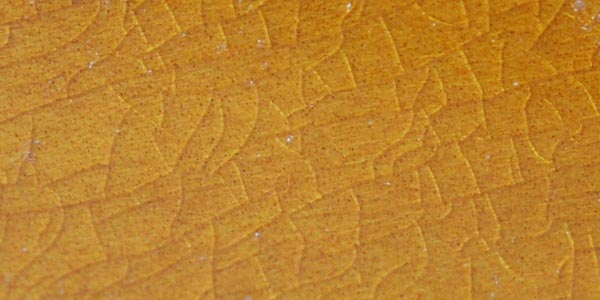
 |
|
#16
|
|||
|
|||
|
Guitars are made of wood, a material that naturally expands and contracts in response to changes in its environment. Nitrocellulose lacquer is a material that is brittle and gradually shrinks. Neither are "stable" materials.
You don't mention a hygrometer. Do you have one and use it? A hygrometer lets you know what humidity you have, rather than guessing. If wood contracts sufficiently in response to a dry environment, it cracks to relieve stresses. When it cracks, it usually cracks the finish attached to it, if it is a surface/film finish. Sometimes, however, the finish, itself, will crack as it shrinks: other times, due to rapid temperature swings, the finish will crack. Sometimes, finishes will crack due to stresses in that part of the instrument, such as near the bridge or adjacent to the fingerboard. Many instrument makers have discontinued using nitrocellulose lacquer in favour of "tougher" finishes that are more stable and less likely to crack (craze). The cracks that you see in your finish could be due to any of those: the top, itself, cracking; rapid changes in temperature; the finish naturally shrinking or in an area of high stress. None of those have much to do with the selling price of the instrument. Some of them are "care" issues, others are the type of finish used. |
|
#17
|
|||
|
|||
|
"You don't mention a hygrometer. Do you have one and use it? A hygrometer lets you know what humidity you have, rather than guessing. ". It's not a guess, but thanks for reminding me that guitars are made of wood. That's a good one!
|
|
#18
|
|||
|
|||
|
It seemed appropriate since you stated a belief that expensive lacquered wooden instruments somehow, by virtue of their price, ought to be immune from the natures of wood and lacquer.
|
|
#19
|
|||
|
|||
|
Jared, once I moved to Alaska I learned that, despite my best efforts and taking every precaution, lacquer cracks sometimes occur. You and I both live in northern climates and that sometimes means that the lacquer won't stay pristine. As Charles noted, this can occur regardless of the initial purchase price of the instrument.
It's mostly because of the inherent properties of nitrocellulose lacquer, which is not a particularly robust or chemically stable finish. Add to that the naturally occurring expansion and contraction of the thin, solid wood plates used for the top, back and sides of a professional quality acoustic guitar, and it means that these sorts of cracks can and often will occur. Nitrocellulose continues to "off-gas" as the finish ages, as plasticizer chemical molecules migrate out. This is particularly noticeable when a nitro-finished guitar is new, as when you leave it in its case for a while, then open the lid and get that "new guitar smell." What you're smelling when you can smell the finish is those plasticizer chemical and other chemical compounds that have off-gassed. While this process slows down as the years pass, it never really stops, and as those molecules leave, the finish quite literally shrinks. Which often causes finish cracking and checking, as in this "windowpane checking" in this photo:  ˙˙˙ Or it can cause precisely the sort of finish crack you've described. I should mention that windowpane cracking often occurs when an instrument is shocked by a sudden temperature change, as well, and those can be avoided if care is taken. But nitrocellulose finishes are still volatile, and its shrinking still occurs, regardless. While I understand your indignation that this should happen to a well-maintained $4000 guitar, the truth of the matter is that more expensive guitars tend to be MORE sensitive to slight environmental changes, not less. It's ironic but true that an all-laminated wood guitar with a polyester finish that you buy in a box for $250 at Costco will be considerably more resistant to finish cracking than an instrument costing ten or twenty times more. That's just part of the deal with a nitrocellulose finish, unfortunately. Hope that makes more sense. Wade Hampton Miller |
|
#20
|
|||
|
|||
|
Quote:
Most lacquer checking occurs because lacquer has more thermal expansion than wood. Usually the culprit is either extremely low temperature or a rapid temperature change. |
|
#21
|
|||
|
|||
|
Quote:
|